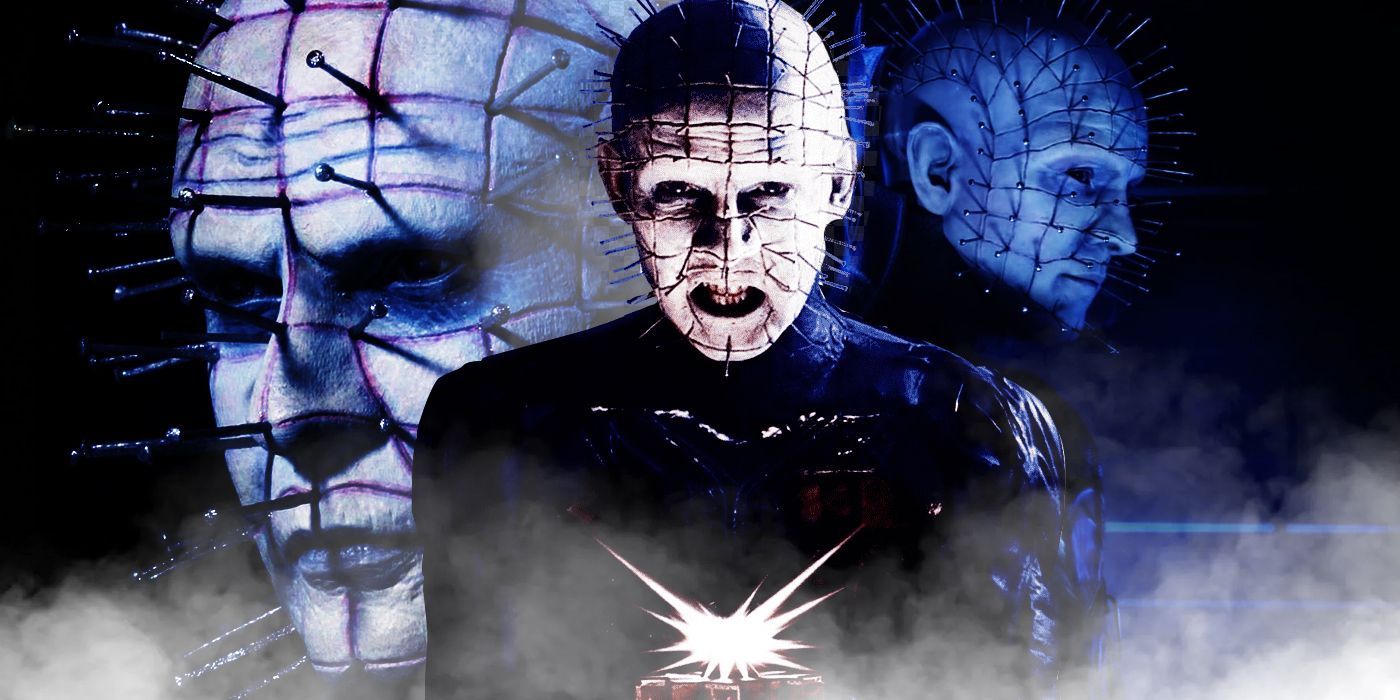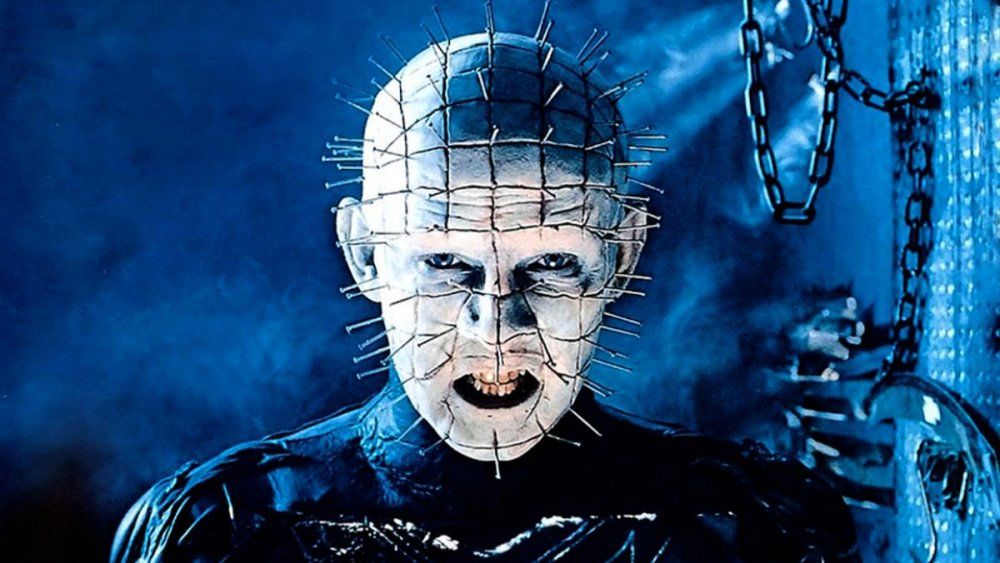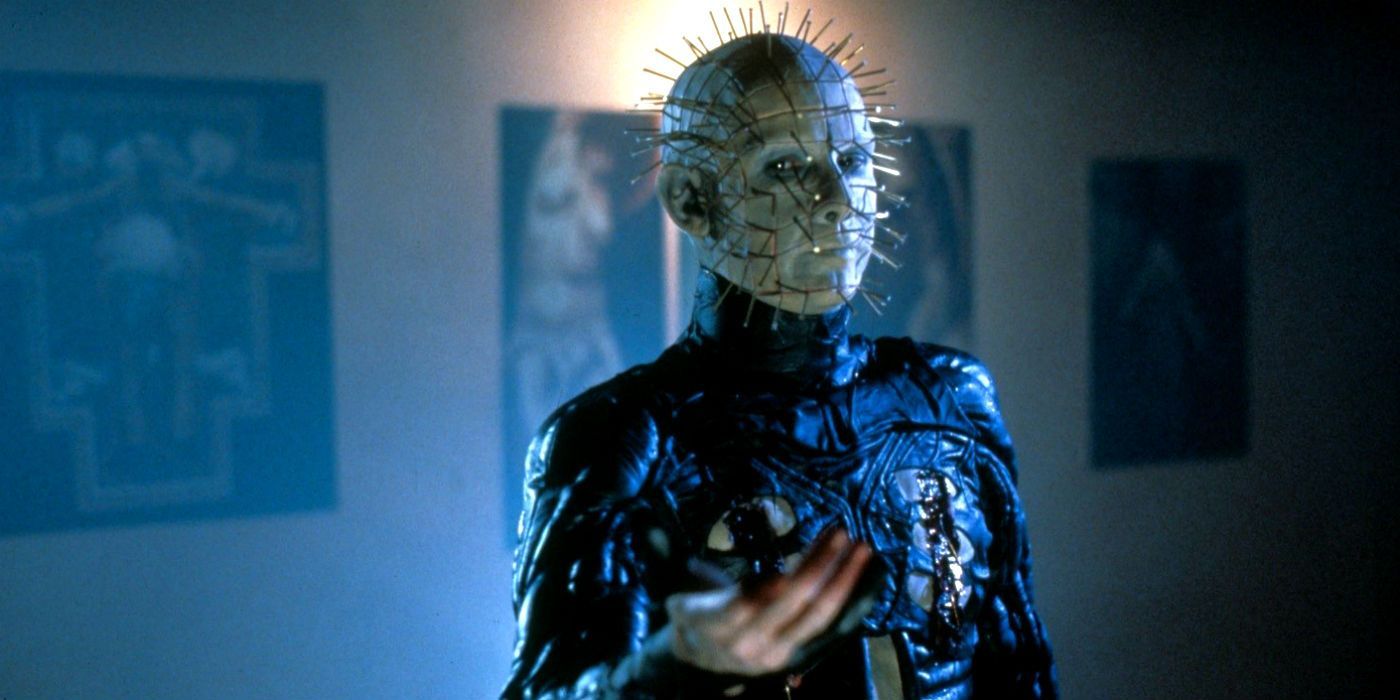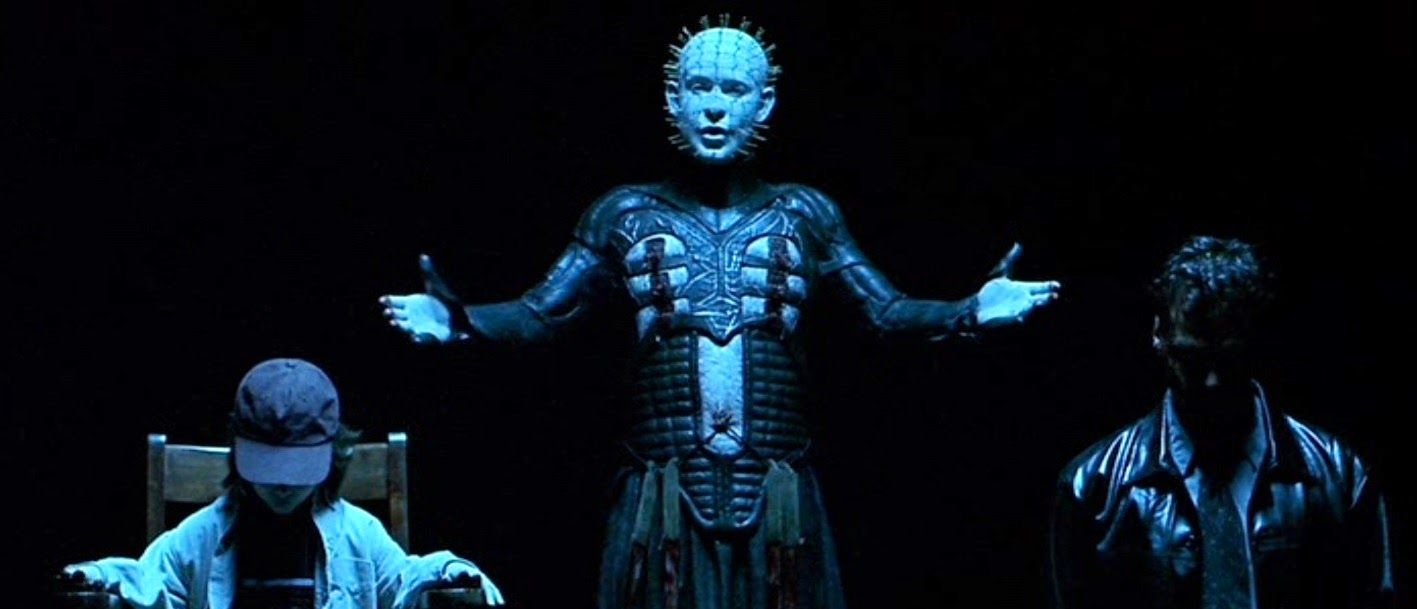When writer and director Clive Barker set out to adapt his novel The Hellbound Heart for the silver screen, he had a very defined characterization for his enigmatic characters, known as the Cenobites. In his notes, Barker remarked that the Cenobites were demonic in appearance, using the term “repulsive glamour” to describe the aesthetic. Despite this alien and tortured appearance, the Cenobites in the original Hellraiser film were refined in their attitude and were not outwardly violent without cause. The speaking member of the original film’s Cenobites, named “The Hell Priest” by Barker and “Pinhead” by the growing fandom, would go on to be the most recognizable face in the Hellraiser franchise.
Pinhead’s characterization in Hellraiser began as one of thoughtfulness. Despite his appearance, Pinhead was not malicious, and his violence is targeted with purpose. However, over the course of nine sequential films, Barker’s characterization of the enigmatic sadomasochist was lost in a tangle of mismanagement by various rights holders’ push for sequels and the conflicting views of many directors and writers. A character that began with a unique and mysterious personality devolved into yet another evil villain who simply seeks to cause suffering.
Where did things take a heel turn? To answer this question, it’s worth looking into the history of Hellraiser and Pinhead’s relationship to the franchise.
Pinhead’s Original Character: Hellraiser (1987)
Summoned via the wicked puzzle box known as the Lament Configuration, Pinhead (Doug Bradley) is tasked alongside his fellow Cenobites Chatterer (Nicholas Vince), Open (Grace Kirby), and Butterball (Simon Bamford) with capturing the protagonist Kirsty Cotton (Ashley Laurence) and taking her to Hell. However, Kirsty strikes a deal with the Cenobites, offering to assist them in the capture of her uncle Frank (Sean Chapman/Oliver Smith) who had escaped Hell and had become a cannibalistic creature bent on restoring his body. Weighing their options, Pinhead agreed to the deal and the group of otherworldly masochists succeeded in tearing Frank limb from limb with hooks and chains.
Still obligated to their unknown duty, Pinhead reneged on his agreement with Kirsty, but was banished alongside his fellow Cenobites as she reversed the puzzle box’s solution. Despite going back on his word, Pinhead in the original Hellraiser was tactful, calm, and killed only where his obligations warranted it, albeit in horrific fashion. The character’s air of mystery was best summed up by one line uttered by Pinhead in the final act. When Kirsty asks the Cenobites who they are, Pinhead replies:
“Explorers in the further regions of experience. Demons to some, angels to others.”
Barker’s original depiction of Pinhead and the Cenobites portrays them as otherworldly pursuers instead of relentless murderers. Sadly, Barker’s lack of involvement in the film’s sequels would be telling, as the characterization of Pinhead and the Cenobites quickly departed from their curious and unique roots.
The Murderous Megalomaniac: Hellraiser III: Hell on Earth (1992) and Hellraiser: Bloodline (1996)
With Clive Barker’s involvement in the rearview mirror after Hellbound: Hellraiser II (1988), Pinhead’s character took a menacing turn. Having been reverted to his original human form Elliott Spencer, Pinhead was killed in combat and trapped within a McGuffin known as the “Pillar of Souls,” giving director Anthony Hickox (Waxwork) and writers Peter Atkins and Tony Randel (who also directed Hellraiser II) free license to play with Pinhead’s character. Freed from his human side by some form of Soul Pillar sorcery in Hellraiser III: Hell on Earth, Pinhead begins to gorge on victims to escape his rectangular prison, leading to a nightclub rampage where he indiscriminately massacres the club’s customers and turns a number of them into Cenobites.
Even after merging with his human aspect again, Pinhead’s behavior changes little in Hellraiser: Bloodline, which inexplicably takes the Hellraiser setting into the future and into space (beating Jason X to the punch by five years). Partnered with the demon princess of Hell Angelique (Valentina Vargas), Pinhead seeks to open an eternal portal from Hell to Earth in order to conquer it and kill any obstacles in the way. If this motivation sounds incredibly played out, that’s because it is. In predictable fashion, Pinhead attempts to manipulate and murder his way to world domination, leaving little room for any kind of imagination or character building.
After being left on an exploding space station and meeting his demise (again), audiences had decided that they had seen enough. Hellraiser: Bloodline would mark the end of the Hellraiser franchise’s theatrical releases. Director and special effects phenom Kevin Yagher removed his credit from the film, showing just how far the series had fallen. Critics lambasted both Hellraiser III and Bloodline, with Washington Post staff writer Richard Harrington remarking “If (Doug Bradley) had the same writers as Sylvester Stallone and Arnold Schwarzenegger, he could be Punhead.”
This era of Pinhead’s character opened the floodgates to more fumbled interpretations. Future iterations would do little to hearken back to Clive Barker’s original vision, if anything at all. It’s a good thing that future Hellraiser sequels didn’t reach theaters because its flagship character became unrecognizable when compared to his first portrayal.
The Direct-to-Video Era and Present Day: Hellraiser: Inferno (2000) to Hellraiser: Judgement (2018) and Beyond
As one might expect, the new millennium hasn’t given the warmest reception to the Hellraiser franchise. Doug Bradley would depart his role as Pinhead by 2011’s Hellraiser: Revelations, leaving even longtime fans with a sour taste in their mouths. Even Bradley’s on-screen veteran presence as the infamous Cenobite wouldn’t be enough to spare the 2000s Hellraiser films from the ire of critics and viewers. Hellraiser: Inferno (2000) lacked substantial Pinhead screentime and any thematic value, Matthew Foster bemoaned. Hellraiser: Hellseeker (2002) sought to bring back Ashley Laurence as Kirsty, but the ambiguous dream-state of both Inferno and Hellseeker relegated Pinhead’s violence to ambiguity, placing the character in an almost rudimentary role. Pinhead shows up, rips some people up with chains, espouses a vague one-liner, and then the audience waits to see if the violence was genuine or imagined.
Later iterations did much to improve Pinhead’s perception from audiences. Although an iconic face in horror at this point, Pinhead’s inclusions in Hellraiser: Hellworld (2005), Revelations and Hellraiser: Judgement (2018), saw him bouncing between personalities, serving only to convolute his image. In fact, Clive Barker even wrote a sequel to The Hellbound Heart, titled The Scarlet Gospels in order to give fans of his work a bonafide and authentic continuation for Pinhead, who Barker had formally named “The Hell Priest,” having disliked the Pinhead moniker for years. While this pleased fans of Barker’s original vision, many horror cinema fans were left wanting.
Going the way of many long-running horror franchises, director David Bruckner (The Night House) is now helming a remake of Hellraiser for Hulu’s streaming platform. In addition, Barker has returned to the Hellraiser franchise to produce a new series for HBO, initially being directed by David Gordon Green (Halloween (2018), Halloween Kills) before handing off future episodes to others. Although Barker is back, it is unclear how involved he will be in the HBO project. Furthermore, Doug Bradley has been mum on returning as his most well-known character.
Will these new entries in the Hellraiser mythos serve to right the ship and return Pinhead/The Hell Priest to his unwonted and sophisticated roots? For the moment, it’s unclear, but it wouldn’t take much to steer things for Clive Barker’s iconic character in the right direction. Since the beginning of this decade-spanning horror series, all that was ever asked for was some consistency for its most central character.
Pinhead was a devil to some, and an angel to others, and hopefully viewers can return to that ambiguity.




